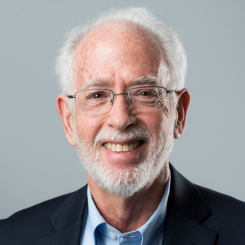Sergio L. Franklin Jr. and Robert S. Pindyck

A number of studies have assessed the economic benefits of a standing tropical forest by estimating the foregone economic benefits resulting from deforestation. The present value of the foregone economic benefits due to one hectare of deforestation has been compared to the present value of future economic benefits of alternative land uses (e.g., crops and cattle ranching) in order to determine the socially optimal land-use policy.
Tropical forest and savanna represent alternative stable states, which are subject to drastic switches at tipping points, in response to changes in rainfall patterns and other drivers. Existing cost studies have ignored the likelihood and possible economic impact of a catastrophic forest-savanna transition, therefore underestimating the social cost of deforestation, favoring the adoption of alternative land uses, and increasing the risk of rainforest collapse.
This paper proposes an alternative framework for calculating the economic value of a standing tropical forest, and explores the implications of a forest-savanna critical transition for the design of optimal land-use policy and payments for ecosystem services. The economic value of a one-hectare grid cell of forest is modeled as a function of a number of hectare-wide (economic and nature) state variables and one ecosystem-wide state variable, forest resilience. The marginal economic value of a standing tropical forest is then measured by the change in total economic value from an additional hectare of deforestation. We applied this framework to the estimation of the social cost of deforestation of the Amazon rainforest.
If it were certain that the worst outcomes from deforestation could be addressed successfully in the future, so that the forest-savanna tipping point would never be reached, then we could rely on current marginal cost calculations that ignore forest resilience. However, if plausible scenarios exist in which the forest ecosystem undergoes a transition, the marginal economic value of a standing forest can be much higher than the present value of the foregone economic benefits from one hectare of deforestation.
We have shown advantages to using an average incremental cost method for the design of optimal land-use policy and payments for ecosystem services. For land-use policy, the increment should be the size of an additional area that is deforested. For the design of payments for ecosystem services, the increment should be the additional deforested area that will bring the entire ecosystem to the forest-savanna tipping point (i.e., a random variable). Additionally, the social cost of deforestation observed by one Amazon country depends on the land-use policies of other countries, and payments for ecosystem services may be necessary to ensure the continued provision of global ecosystem services such as carbon storage and biodiversity protection.
The average incremental social cost of deforestation is a single number that provides relatively long-term guidance for the design of payments for ecosystem services. That number can be used by all Amazon countries, and it is not expected to change much over time, while the marginal social cost of deforestation faced by an individual country may change from year to year.
Further reading: CEEPR WP 2017-007




